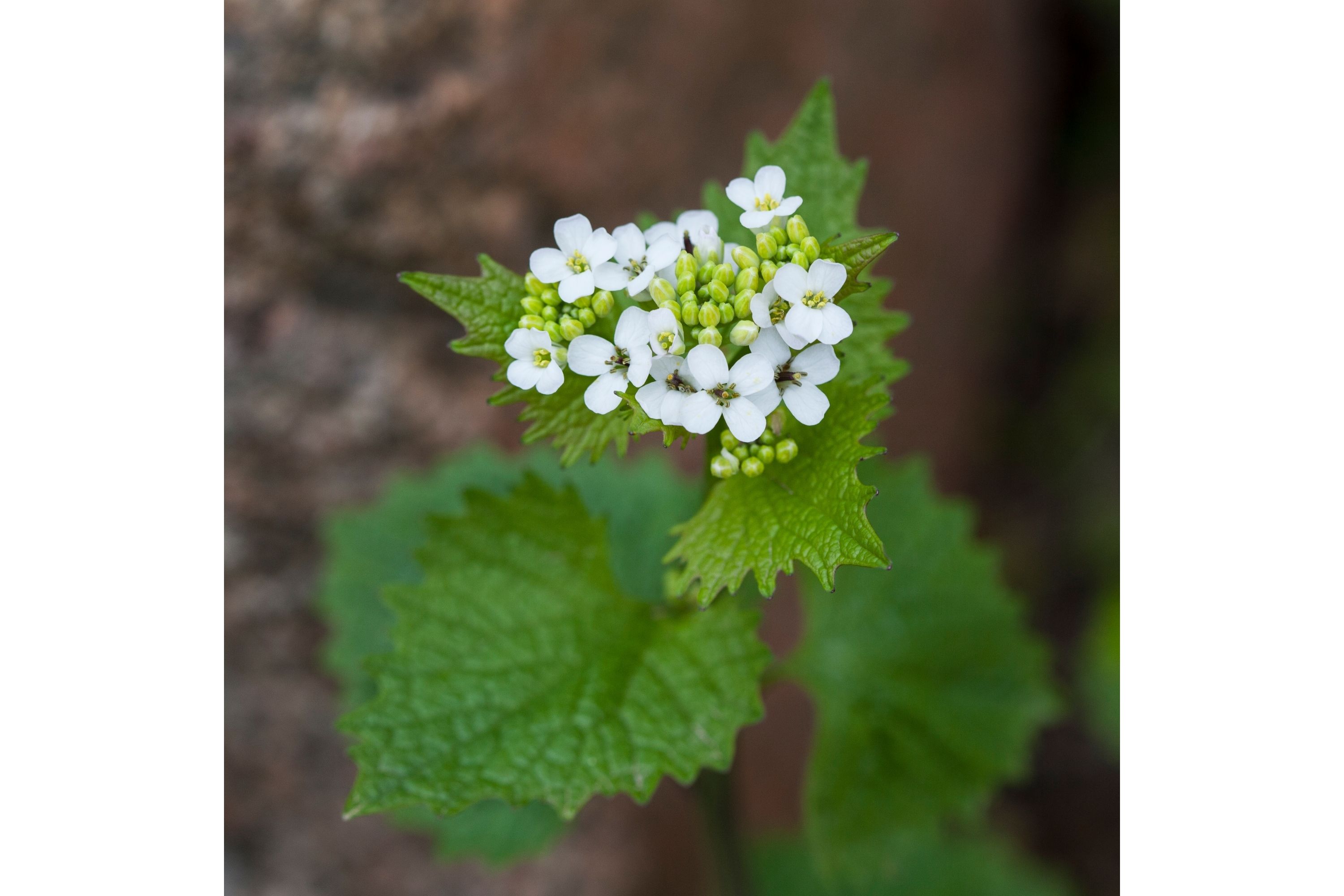Garlic mustard
(Alliaria petiolata)

Description
Alliaria petiolata, commonly known as garlic mustard, is a biennial plant native to Europe and western Asia. It was introduced to North America in the 1800s as a culinary herb, but has since become an invasive species in many parts of the continent. In this article, we will explore the characteristics, habitat, ecological impacts, and management strategies of Alliaria petiolata. Characteristics: Alliaria petiolata is a herbaceous plant that can grow up to 1 meter tall. It has dark green leaves that are triangular to heart-shaped with scalloped edges. The leaves are 5-10 cm long and 3-8 cm wide, and have a distinctive garlic-like odor when crushed. The plant produces small, white flowers in the spring that are arranged in clusters at the ends of the stems. The flowers have four petals and are about 4 mm in diameter. The plant then produces elongated seed pods that are about 4-5 cm long and 2 mm wide, containing numerous small, dark brown seeds. Habitat: Alliaria petiolata is adaptable to a wide range of environmental conditions, and can grow in both shaded and open areas. It is commonly found in forests, woodlands, and along roadsides. The plant prefers moist, fertile soils, but can also grow in dry, nutrient-poor soils. It can tolerate a wide range of pH levels, from acidic to slightly alkaline. Ecological Impacts: Alliaria petiolata has become a problematic invasive species in many parts of North America. The plant outcompetes native vegetation by producing allelopathic chemicals that inhibit the growth of other plant species. Additionally, Alliaria petiolata has a fast growth rate and can produce large quantities of seeds, further contributing to its ability to dominate native vegetation. Its early emergence in the spring also gives it a competitive advantage over many native plants that emerge later in the season. Alliaria petiolata is particularly damaging to native forest understories, where it can form dense monocultures that displace native plant species. This has negative effects on forest ecosystems, as it can reduce biodiversity and alter nutrient cycling. Additionally, it can impact soil moisture levels, which can have cascading effects on the ecosystem. Management Strategies: There are a variety of management strategies that can be used to control Alliaria petiolata. These include mechanical, chemical, and biological control methods. Mechanical control involves physically removing the plant by hand-pulling or using tools such as hoes and weed whips. This can be effective for small infestations, but is labor-intensive and may not be practical for large areas. Chemical control involves using herbicides to kill the plant. Glyphosate and triclopyr are commonly used herbicides for Alliaria petiolata control. Care must be taken when using herbicides, as they can also harm non-target plants and wildlife. Biological control involves using natural enemies of the plant to reduce its populations. In the case of Alliaria petiolata, several insects and fungi have been introduced as biocontrol agents. The most successful of these is the weevil Ceutorhynchus scrobicollis, which feeds on the seeds of the plant and can reduce seed production by up to 80%. In conclusion, Alliaria petiolata is a problematic invasive species that can have negative impacts on native ecosystems. It is important to manage infestations of this plant using a combination of mechanical, chemical, and biological control methods in order to protect the biodiversity and ecological health of our forests and woodlands.
Taxonomic tree:







